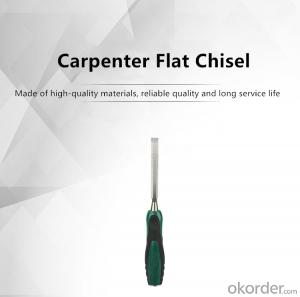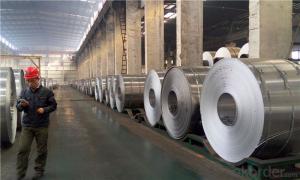Flat Stock Aluminum Roll
Flat Stock Aluminum Roll Related Searches
Led Light Bulbs For Ceiling Fixtures Led Lamps For Ceiling 42 In Ceiling Fan With Light Aluminum Coil Stock For Gutters Aluminum Foil For The Grill Hole Saw For Aluminum Plate Aluminum Tread Plate For Trailer Bow Plate For Aluminum Boat Aluminum Foil For Grow Room Aluminum Foil For Joint PainHot Searches
Stock Price For Aluminum Aluminum Coil Stock For Sale Aluminum Gutter Coil For Sale Used Aluminum Scaffolding For Sale 1/4 Aluminum Plate For Sale Aluminum Bar Stock For Sale Aluminum Round Stock For Sale Aluminum Diamond Plate For Sale Aluminum Scaffolding For Sale Craigslist 6061 Aluminum Plate For Sale Aluminum Dock Plate For Sale 7075 Aluminum Plate For Sale Aluminum Tread Plate For Sale Aluminum Checker Plate For Sale Aluminum Plate For Sale Near Me Plate Aluminum For Sale Aluminum Plate For Sale Aluminum Square Stock For Sale Aluminum Flat Stock For Sale Billet Aluminum Stock For SaleFlat Stock Aluminum Roll Supplier & Manufacturer from China
Okorder.com is a professional Flat Stock Aluminum Roll supplier & manufacturer, offers integrated one-stop services including real-time quoting and online cargo tracking. We are funded by CNBM Group, a Fortune 500 enterprise and the largest Flat Stock Aluminum Roll firm in China.Hot Products
FAQ
- There are several packaging options available for aluminum coils, depending on the specific needs and requirements of the customer. Some common packaging options include: 1. Wooden crates: Aluminum coils can be packaged in sturdy wooden crates to provide maximum protection during transportation and storage. The crates are typically made of high-quality wood and are designed to withstand rough handling and prevent damage to the coils. 2. Cardboard boxes: For smaller aluminum coils, cardboard boxes can be used as a packaging option. These boxes are lightweight, cost-effective, and offer adequate protection against minor impacts and environmental factors. 3. Steel or aluminum skids: Another option for packaging aluminum coils is to place them on steel or aluminum skids. Skids provide a stable base for the coils and allow for easy handling using forklifts or pallet jacks. They are commonly used for larger coils or when multiple coils need to be transported together. 4. Stretch wrap: Stretch wrap is a popular choice for packaging aluminum coils as it provides excellent protection against dust, moisture, and scratches. The coils are tightly wrapped in a layer of plastic film, ensuring they stay secure during transportation. 5. Custom packaging: In some cases, customers may require customized packaging solutions to meet specific requirements. This can include using protective covers, foam padding, or additional reinforcements to ensure the safe handling and delivery of the aluminum coils. It is important to note that the choice of packaging option depends on various factors such as coil size, weight, transportation method, and the intended use of the coils. Working closely with a reputable packaging provider can help determine the most suitable packaging option for aluminum coils.
- Indeed, radiation shielding can be accomplished using aluminum coils. Owing to its substantial atomic number and density, aluminum is frequently employed as a radiation shielding material, demonstrating remarkable proficiency in absorbing and dispersing radiation. It effectively safeguards against an extensive spectrum of radiation varieties, encompassing gamma rays and X-rays. Moreover, aluminum possesses the advantageous qualities of being lightweight and pliable, rendering it convenient to manipulate and appropriate for a wide range of situations necessitating radiation shielding. These encompass domains such as medical imaging, nuclear power plants, and the aerospace industry.
- Aluminum coils are processed for specific surface finishes through a series of steps that involve cleaning, pretreatment, coating, and curing. The first step in processing aluminum coils is cleaning. This involves removing any dirt, oil, or other contaminants from the surface of the coils. Cleaning is typically done using a combination of chemical cleaners and mechanical methods, such as scrubbing or brushing. After cleaning, the coils undergo a pretreatment process. Pretreatment is essential to ensure proper adhesion of the surface finish. It involves the application of a chemical solution or coating that prepares the surface of the aluminum for the subsequent coating. This step typically includes processes like etching, desmutting, and deoxidizing, which help improve the surface quality and promote adhesion. Once the coils have been cleaned and pretreated, they are ready for coating. The specific coating method depends on the desired surface finish. Some common coating techniques include coil coating, anodizing, painting, or powder coating. Coil coating involves the application of a liquid coating onto the surface of the aluminum coils. Anodizing is an electrochemical process that creates a durable and corrosion-resistant layer on the surface. Painting and powder coating involve the application of a dry paint or powder onto the coils, which is then cured to form a protective and decorative finish. After the coating is applied, the coils go through a curing process. Curing involves subjecting the coated coils to high temperatures, which causes the coating to chemically react and harden. This step is crucial for achieving the desired properties and durability of the surface finish. Overall, the processing of aluminum coils for specific surface finishes involves a combination of cleaning, pretreatment, coating, and curing steps. These processes ensure that the coils are properly prepared and coated to achieve the desired surface finish, whether it be for protection, aesthetics, or specific functional requirements.
- Yes, aluminum coils can be used in the production of cookware. Aluminum is a popular material choice for cookware due to its excellent heat conductivity and lightweight nature. By using aluminum coils, manufacturers can easily shape and form the cookware into various shapes and sizes. Additionally, aluminum is resistant to rust and corrosion, making it suitable for long-term use in the kitchen. However, it is important to note that aluminum cookware should have a non-stick coating or be anodized to prevent any potential interaction between the aluminum and food, as excessive consumption of aluminum can be harmful to health.
- What are the compositions of aluminum coil coating?
- The common compositions are crylic resin, solid inorganic filler, different pigments, flatting agent and so on.
- Yes, aluminum coils are suitable for gutter systems. Aluminum is a popular choice for gutter systems due to its durability, lightweight nature, and resistance to rust and corrosion. It is a cost-effective option that can withstand harsh weather conditions and has a long lifespan. Additionally, aluminum coils are easy to install and maintain, making them an ideal choice for gutter systems.
- Indeed, chemical processing equipment can utilize aluminum coils. Aluminum possesses remarkable corrosion resistance, rendering it appropriate for deployment in numerous chemical settings. Its resistance extends to various acids, alkalis, and other corrosive elements. Moreover, aluminum coils are lightweight and possess commendable heat transfer qualities, rendering them optimal for scenarios necessitating heat exchange. Nonetheless, it is crucial to acknowledge that aluminum exhibits restrictions in specific aggressive chemical environments, such as potent acids like hydrochloric acid or sulfuric acid. In such instances, alternative materials such as stainless steel or titanium may prove more fitting.
- The choice between Vinyl and Aluminum? By Mastercraft Exteriors
- Vinyl. Aluminum dents, and the paint can be scratched off. Vinyl pops back, and the color goes all the way through.













































